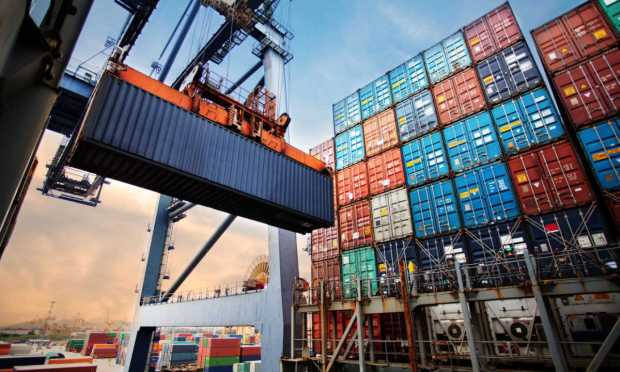Freightos’ Freight-as-a-Service Platform Finds Success With Large Suppliers

For any platform model to succeed, there should be growth in both supply and demand.
Freightos’ most recent update on its bookings and transactions show that its moves to digitize B2B interactions and streamline global trade are gathering momentum.
Broadly speaking, freight-as-a-service connects providers, a data flow of what Freightos has billed as “billions of price and routing points” to improve the management and handling of shipments. The data shows that in the fourth quarter of last year, total transactions stood at 221,000, up more than 127% from a year ago. Buyers grew 37% over the same period, to 15,600.
Overall, Freightos said in its January announcement, the gross booking value of transactions made on the platform also increased for the full 2022 from the previous year by 102% year on year to $610.8 million.
Importantly, the supply side of the platform is growing as well, indicating greater acceptance that airlines and ocean carriers’ fleet utilization and operational efforts need to be brought more fully into the digital age as goods move across the globe.
Carriers selling on the platform, where Freightos said they’d sold primarily on WebCargo, was up 25% from the same quarter in 2021.
As PYMNTS reported last month, Freightos’ filings with the Securities and Exchange Commission highlighted how the emergence of the marketplace model has attracted the participation of large carriers. In its filing, Freightos said its partnerships “represent a significant share of the world market for shipping full container loads; two of the largest ocean consolidators for shipping less than full container loads; and technical connections to approximately 150 less-than-truck-load carriers in the United States.”
Better Connectivity
That connectivity links the carriers, the freight forwarders and importers/exporters. Freightos maintains in its discussion of platform dynamics that “sellers bring in new capacity that attracts new buyers, and buyers bring demand that attracts new sellers.”
That’s a virtuous cycle, and it’s one that hinges on a consumerization of what’s been, traditionally, a paper-laden industry, marked by opaque pricing and not much transparency in fees or even where goods might be in the supply chain.
The third-party logistics and supply chain management space itself generated about $1 trillion in revenue in 2020, and is on track to generate as much as $1.8 trillion in sales by 2026 within a global trade market that is worth more than $22.5 trillion, the company said, citing data by Global Market Insights.
In a bit of granular insight into where the demand had been markedly high headed into the end of the year, Freightos CEO Zvi Schreiber told PYMNTS’ Karen Webster in an October interview that airline-related bookings across the Freightos platform have soared by 100 times since the beginning of 2020.
More recently, and with focus on another part of the global supply chain, Freightos’ own data has shown into 2023 that container spot rates, as measured through its Freightos Baltic Daily Index, are down 93% from their pandemic peaks.
As pricing rationalizes and capacity becomes excess capacity, more efficient matching of supply and demand (and fine tuning of pricing) becomes critical. The international freight market may be volatile in the months ahead, but the digital shift will be a certainty.
